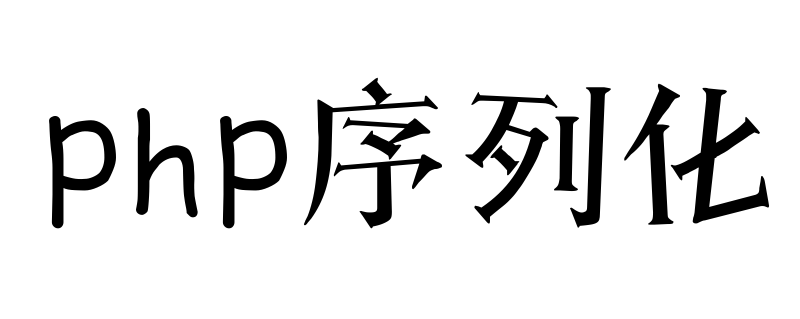php序列化的用法总结(代码示例)
来源:不言 发布时间:2019-01-16 14:58:30 阅读量:1178
序列化可以将数组等保存为数组,此外,它还可用于发送和接收邮件,这样说可能不太好理解,本篇文章我们就来介绍关于php序列化的内容。

通常在数据库中存储数组时会发生什么?
尝试在数据库中注册以下数组。
1 |
|
然后尝试再次获取它
1 |
|
我们获取到的是字符串,在没有序列化的情况下在数据库中注册后,如果再次检索它,它将成为一个字符串。
使用foreach语句获取此字符串是不行的。
数组需要作为数组在数据库中注册,这时就需要使用序列化。
我们来使用一下序列化
要序列化,需要使用serialize函数
此外,结果取决于要序列化的数据类型。
序列化数组
1 2 3 4 |
|
执行结果为
1 |
|
请注意,初始[a:3]部分以[type:value]的形式显示。
表示数组的类型是a。
此外,之后的显示是数组数据部分,由[key; value;]表示
序列化整数
1 2 3 4 |
|
结果为
1 |
|
序列化字符串
1 2 3 4 |
|
结果为
1 |
|
表示字符串的类型是s。
在字符串的情况下也有数字,但这表示字符数。
序列化很简单。
然后发送序列化数据或将其保存在数据库中。
用unserialize进行反序列化
要使用序列化数据,您不能按原样使用它。
必须使用 unserialize来恢复原始类型和结构。
反序列化数组
1 2 3 4 5 6 |
|
为了清晰起见,显示了序列化的$ disp,并设置换行符(<br />)。
此外,$ disp被反序列化并显示。
print_r用于显示数组的内容。
结果为
1 2 |
|
第一行是序列化的结果,第二行是反序列化的结果。
反序列化整数
1 2 3 4 5 6 |
|
结果为
1 2 |
|
反序列化字符串
1 2 3 4 5 6 |
|
结果为
1 2 |
|
恢复序列化数据很容易。

 13450931319
13450931319 微信登录
微信登录
 QQ登录
QQ登录
 微博登录
微博登录


 售前咨询
售前咨询
